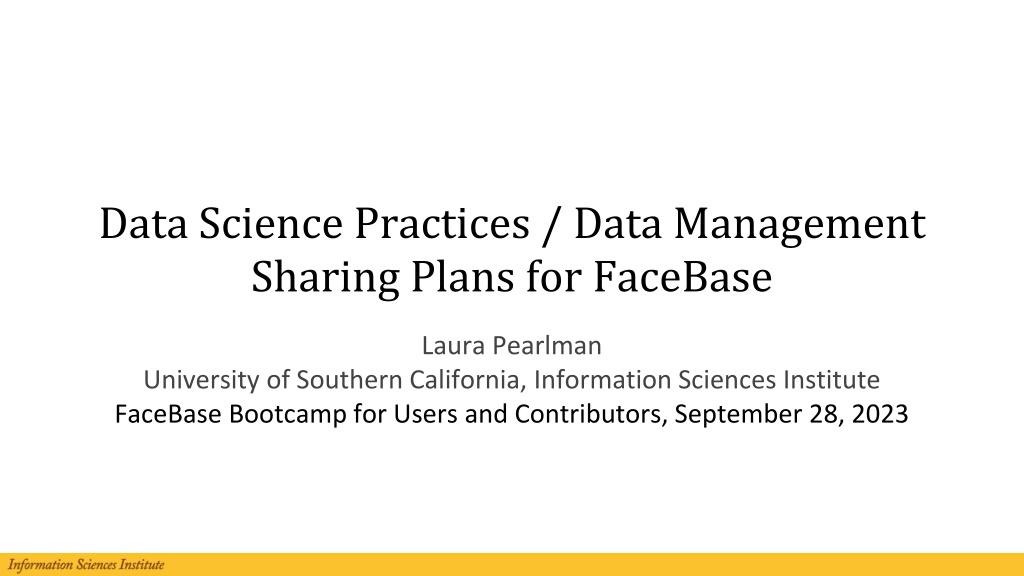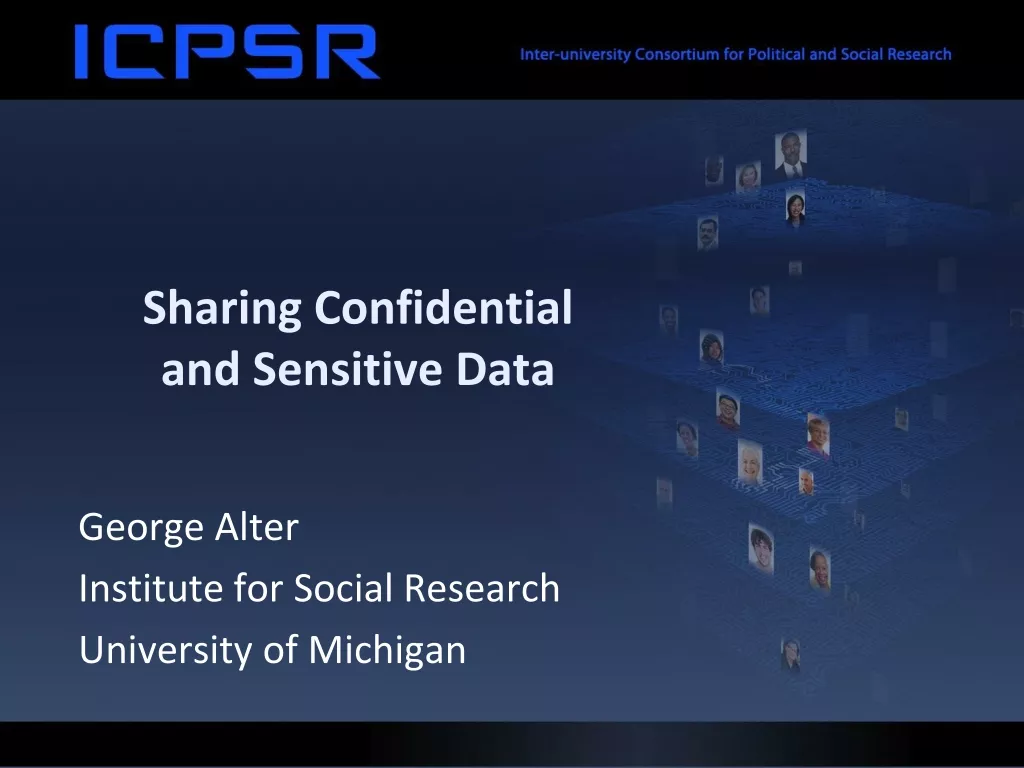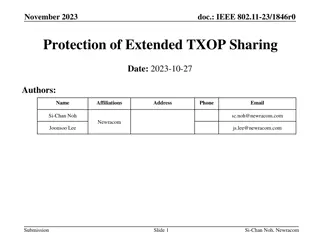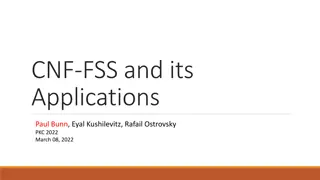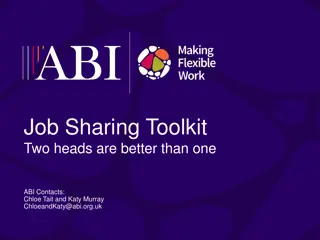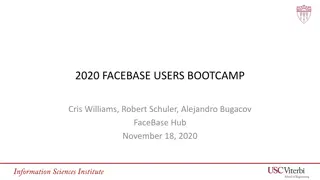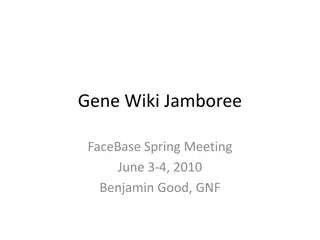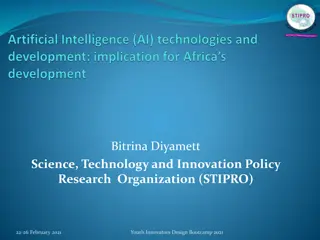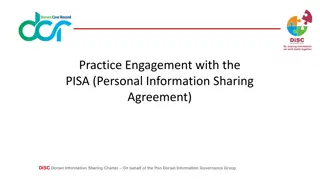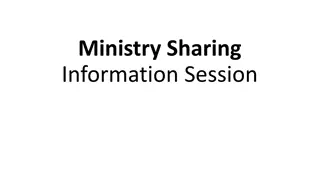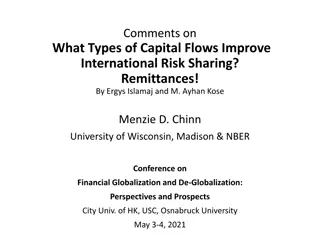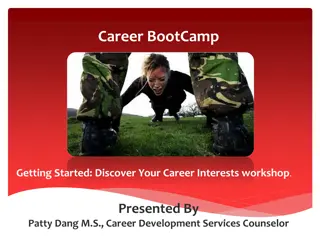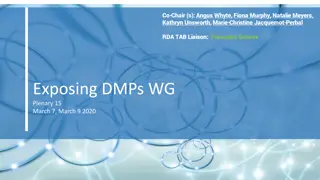Best Practices for Data Management and Sharing in FaceBase Bootcamp
Explore essential considerations and planning strategies for effective data management and sharing in the FaceBase Bootcamp at the University of Southern California. Learn about complying with NIH requirements, organizing data, supported data types and formats, and more to enhance data reusability and accessibility.
Download Presentation

Please find below an Image/Link to download the presentation.
The content on the website is provided AS IS for your information and personal use only. It may not be sold, licensed, or shared on other websites without obtaining consent from the author. Download presentation by click this link. If you encounter any issues during the download, it is possible that the publisher has removed the file from their server.
E N D
Presentation Transcript
Data Science Practices / Data Management Sharing Plans for FaceBase Laura Pearlman University of Southern California, Information Sciences Institute FaceBase Bootcamp for Users and Contributors, September 28, 2023
Planning for Data Management Why bother? Comply with new (2023) NIH Data Management and Sharing Plan requirements Ensure data is reusable Standard data formats Rich metadata Standard ontologies Understand and budget for the required level of effort
Data Management Considerations When, and how often, will you upload your data? We encourage uploads early and often But you ll need to have collected some data before it s approved for FaceBase How will you manage your data before it s uploaded? How will you organize your data and metadata before you upload? Do you have space for it? Do you have security and backup policies in place? Will you need to do any preprocessing? Does this involve tools you ll develop yourself? If so, will you make it available on an open-source repository like github?
FaceBase-Specific Considerations The FaceBase repository currently supports certain: Data Types File Formats Metadata elements Expressed in specific ontologies If you have data/metadata that doesn t quite fit this model, talk to us!
Data Types (Not an Exhaustive List) See Key Concepts for Data Contributors for a full list of currently supported data and experiment types and species. Some currently supported data types: Sequencing data (and derived processed and track data) Imaging data (2D or 3D) Surface/Mesh data Species: human, mouse, zebrafish, chick, xenopus Some experiment types: Tomography/MRI Gene Expression Epigenetics Microscopy
Data Formats Some Supported Data Formats: Sequencing Data: Raw: fastq Processed: fastqc, count, tpm, fpkm, bam, bai, and measures in tsv Track Data: BED (.bed), bigBed (.bb), and bigWig (.bw) Imaging Data: TIFF, OME-TIFF, NIfTI Surface Model / Mesh Data: Wavefront OBJ Considerations for new formats: Is the format open (via standards or de facto openness)? Are free or widely used tools available?
Metadata FaceBase has some minimum metadata requirements Protocols for each experiment (we recommend the Nature Protocol Exchange format) Species, developmental stage, and anatomy for each biosample Additional requirements depending on data type FaceBase supports many more optional metadata elements The more metadata you provide, the more discoverable and reproduceable your data will be If you want to provide more than we currently collect, we ll probably accommodate those too. How will you express the metadata? FaceBase uses standard ontologies for different metadata types
Some Ontologies Used by FaceBase Anatomy: UBERON Chromatin modifier: ZFIN, NGI, HGNC, Ensemble, MGI Data type: OBI, SMOMEDCT, CHMO Experiment type: MMO, ERO, CHMO, SCTID, OBI, STATO Gene: NCBI Phenotype: chmo, cmmo, fma, MP, HP, DOID Sex: UBERON Species: NCBI Taxon Strain: MGI Syndrome: MONDO Transcription factor: MGI, ZFIN, Gene_ORFName, Ensembl, HGNC
Adding New Ontologies We add new ontologies when necessary. Considerations: Is the ontology standardized and widely used? Does the DOC community generally agree that it s a good fit? Does it overlap with currently-supported FaceBase ontologies?
Writing the DMS Plan Useful resources: NIH Writing a Data Management and Sharing Plan Includes format and sample plans Includes links to additional requirements for specific institutes, programs, and offices Writing a DMS Plan for FaceBase Based on NIH DMS plan format
DMS Plan - Element 1: Data Type Question Contributor activity FaceBase provides Provides entire answer Types and amount of data to be generated Some boilerplate text about sharing of public and protected human data Provides bulk of answer Types and amount of data to be shared (and rationale) Writes answer using FaceBase-provided text snippets based on their data and metadata. Boilerplate text snippets about required and optional metadata. Metadata, other relevant data, and associated documentation
DMS Plan - Element 2: Related Tools, Software and/or Code: Question Contributor activity FaceBase provides Boilerplate text about FaceBase tools for visualizing and annotating various types of data, which the contributor can include if relevant. Provides bulk of answer Specialized tools, software, and/or code needed to access or manipulate shared scientific data, and how they can be accessed.
DMS Plan - Element 3: Standards Question Contributor activity FaceBase provides Text snippets for the standards that FaceBase supports. Constructs answer from text snippets for all relevant metadata types. State what common data standards will be applied to the scientific data and associated metadata to enable interoperability of datasets and resources, and how these data standards will be applied
DMS Plan - Element 4: Data Preservation, Access, and Associated Timelines Question Contributor activity FaceBase provides FaceBase: www.facebase.org Repository where data and metadata will be archived Text about persistent record IDs generated by FaceBase and optional DataCite DOIs. How scientific data will be findable and identifiable When - either after curation or after publication. How long text When and how long the data will be made available.
DMS Plan - Element 5: Access, Distribution, or Reuse Considerations Question Contributor activity FaceBase provides Provides entire answer Factors affecting subsequent access, distribution, or reuse of scientific data Some text about sharing of public and protected human data Provides bulk of answer Whether access to scientific data will be controlled Provides entire answer Protections for privacy, rights, and confidentiality of human research participants
DMS Plan - Element 6: Oversight of Data Management and Sharing Question Contributor activity FaceBase provides Partial (FaceBase-specific) text. Provides text specific to their project Describe how compliance with this Plan will be monitored and managed, frequency of oversight, and by whom at your institution (e.g., titles, roles).
Further Resources NIH Writing a Data Management & Sharing Plan : https://sharing.nih.gov/data- management-and-sharing-policy/planning-and-budgeting-for-data-management- and-sharing/writing-a-data-management-and-sharing-plan FaceBase Key Concepts for Contributors : https://docs.facebase.org/docs/Data- Submission-Key-Concepts/ Writing a DMS Plan for FaceBase : https://www.facebase.org/contributing/dms/ FaceBase monthly office hours help@facebase.org Contact us at any point in this process, but definitely let us know once you re funded!
